‘This may be our slice of paradise, but putting it back together will be no piece of cake’
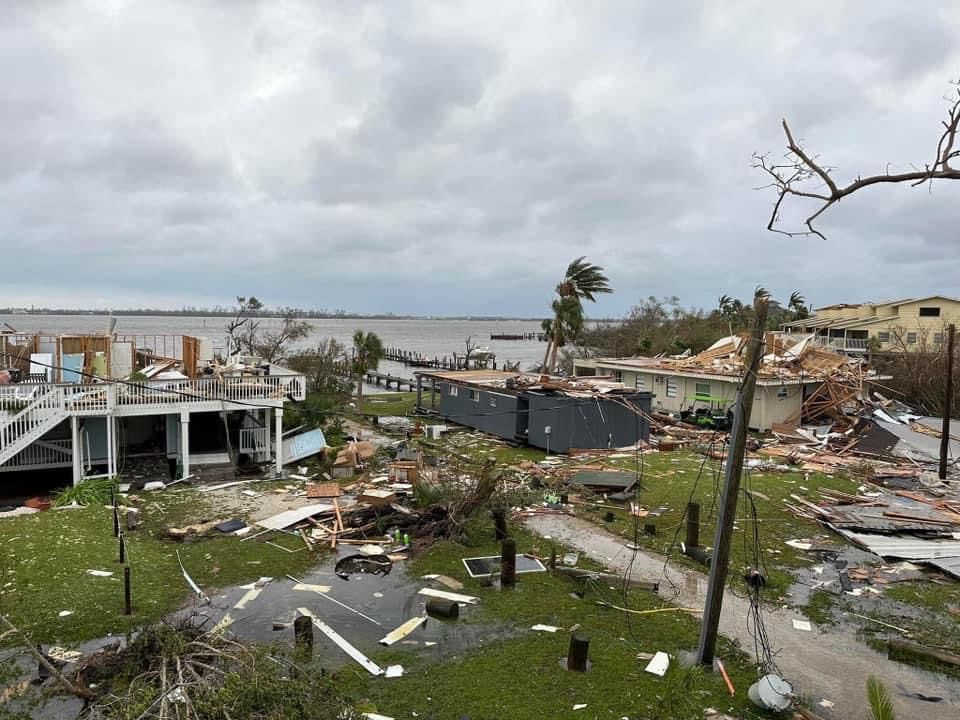
LGI comes together to confront one of the worst storms in their history
Sometimes, one innocuous post on Facebook can change a day for the better. The caption on a photo of a photograph of a lady sitting on a screened-in deck said, “A lineman brought this to us after finding it. It was near the south canal. If it’s yours, text Willy.” The photo had been found on Little Gasparilla Island after Hurricane Ian hit. Who knows how far that little piece of a memory flew from its original location, but the people of LGI all know how precious those little memories are.
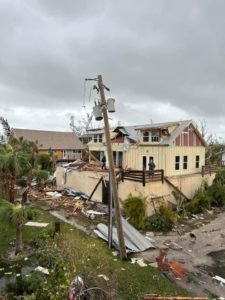
After all, they have already watched their little island network of generational houses and families become more and more commercialized, the island turned more into a destination spot than a family haven. They have weathered many storms out there and watched some homes literally disappear into the Gulf. The joke is, “Well, our house is the third … I mean the second … one from the Gulf … “
Ian hit them really hard. There is hardly a home that didn’t have some kind of damage, even if it isn’t apparent from the outside. When Raphaela and William Myers came back to the island after evacuating, they had to hitch a ride because their boat had sunk. She described what it was like coming over the water, toward home.
“We remember the chaos of the morning after far more than the storm itself,” she said. “Dismal skies and a very rough bay. As soon as we exited Eldred’s Marina, we could see all of the foliage was gone. We wiped saltwater spray from our faces as we bounced between the white caps, catching glimpses of the condos without roofs, then entire houses smashed to bits. Our ride stopped mid-island when the driver saw his own house, the entire upper addition ripped off. We couldn’t ask for him to continue to our dock. It took us 15 minutes, climbing under trees, over trees, through nasty mucky water to reach the beach. It took thirty minutes from our beach access to get to our house, winding through nasty water and some of the biggest trees that had been downed.”
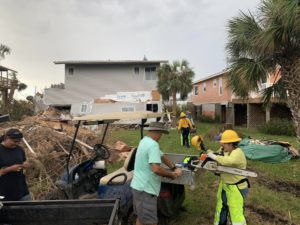
It was more like a war zone than the familiar place they called home. Fire alarms were blaring everywhere, helicopters flew over non-stop. It was chaos.
“Our home looked ok from the outside, missing a few soffits, it seemed,” Raphaela said. “Once we entered, it was far worse. A huge window had blown out and what seemed like half of Placida was in our living room. The stairwell was covered with drywall and insulation. Upstairs the ceilings were all down, what we left behind in shambles. We went back outside with Pebbles (their dog), sat on the stairs, looked at our new water view, lit a cigarette and cried. We had no clue where to start. There was no cell signal, we had no boat, it was a long, nasty trek back to our friends.“
Raphaela said in the days to come, islanders like Chris Naskle, Bob Deegan and Jack Boyer would use their own personal equipment to clear the roads. This is something that has always been done in island communities like theirs, and like ours.
LGI still has the closeness that many places had generations ago. The residents don’t just know each other; they could get their neighbors’ groceries for them, right down to their favorite type of bread. With no bridge to the mainland and boat travel being costly to sometimes dangerous depending on the weather, they rely heavily on each other.
And so it was in the days after Ian, and still is.
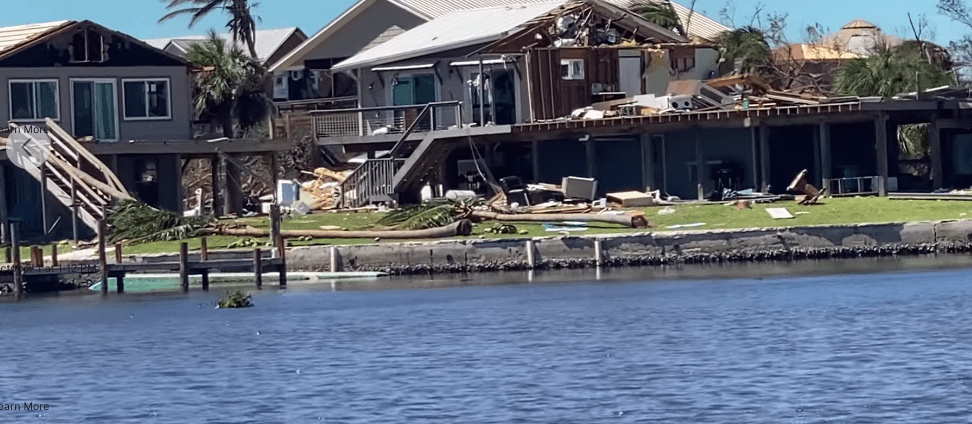
The pictures taken in the days that followed the storm told a tale that most who lived it will never forget. Tree root systems 25 feet high were exposed, ripped out of the ground. Many homes lost most of their second or third story. Bits of people’s lives were strewn across the entirety of the small island. One house leapfrogged five other houses to land in another’s backyard.
“The further south we were able to get, the worse it was,” Raphaela said. “Houses were leaning, some completely gone, some ripped to shreds. As we toured, people came out to us with tears in their eyes asking where to start. So many emotions, but wonderful to see familiar faces. We worked until our feet and hands blistered. William’s feet became severely infected; his toes changed colors.
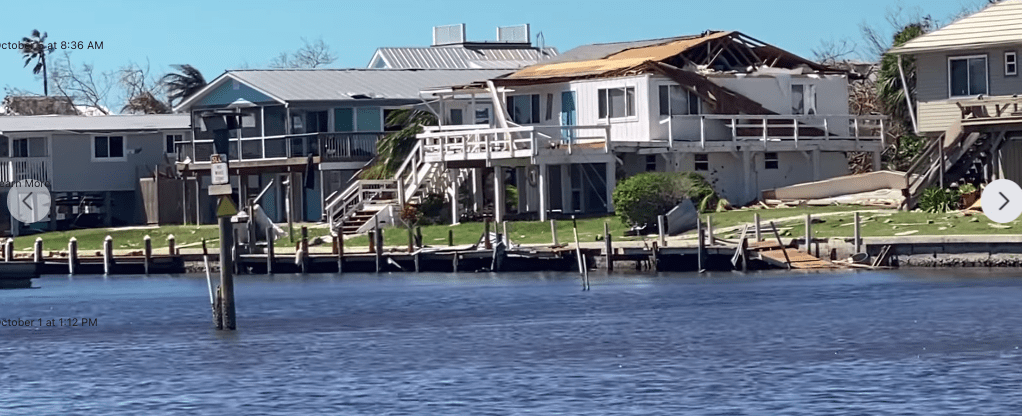
“We were at the end. Paralyzed in hopelessness. The more we do, the more damage we find. Each cupboard, each storage bin, each memory destroyed and/or riddled with mold. We are not alone. Everyone’s suffered damage. Those who think they did not will find it hidden soon enough, lurking in their homes, ready to bring more tears.”
While many think that Ian was a terrible thing to go through, Wendy Patriquin has been through two this year. She and her husband have a residence in Nova Scotia, where Hurricane Fiona hit just a few short weeks ago. Fiona was considered the worst hurricane in Canada’s history. Wendy and her family summer in Nova Scotia and spend two months in the winter at Hideaway Beach on LGI.
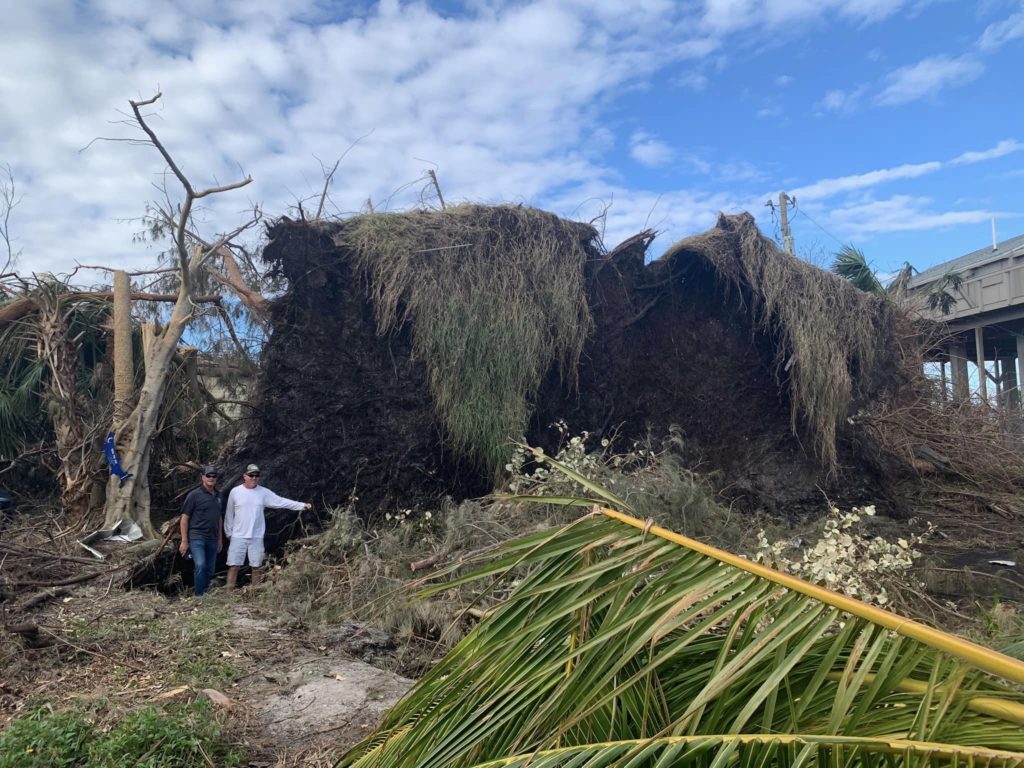
“A large portion of our damages … in all of the Maritime provinces has been the loss of massive, healthy, old-growth trees falling across wires and roads and properties,” she said. “The wind (during Fiona) was horrific … our neighbors’ metal roof was torn off and slammed in three separate pieces to hit two cottages/homes nearby. We too were without power for an extended period, and some on Prince Edward Island still haven’t had it restored. We feel blessed that we, for the most part, have homes to repair. Our hearts are very sad … do love our friends on the island and the thought of not seeing everyone this year is very difficult. At 78 years we are still praying that somehow, we will work something out, perhaps nearby so we can at least be able to visit and give whatever comfort we can.”
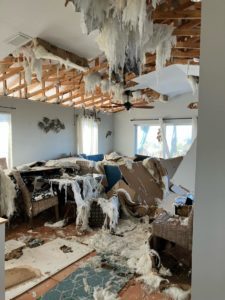
If there is a positive side to all of this for LGI residents, the fly-by-night adjustors and others who immediately swoop in to drum up some cash, came to the island boasting that they could set it to rights quickly but disappeared into the night when they realized, as one resident put it, “what a logistical nightmare it is.” To have to barge over every piece of equipment, every piece of a house that won’t fit in a small boat … one doesn’t realize what a project that is until they have experienced it firsthand.

To put even more icing on the cake, Charlotte County has notified residents that even if their property is considered a total loss, tax bills for the total appraisal amount will be coming in the mail any day.
There have been huge shooting stars in the black skies that have seemed endless in the last few weeks. Groups of people from all over have been coming to help LGI residents – Victory Outreach volunteers came, some from as far away as New Mexico like one young man named Quincy who got to see the ocean for the first time, who loved to weave palm frond bracelets. The Church of Hope of Sarasota sent a large group of volunteers who helped out in many ways. The Spokes of Hope disaster relief workers came from South Carolina as well. There is an Amazon wish list that has been created for residents, as well as a Gofundme page.
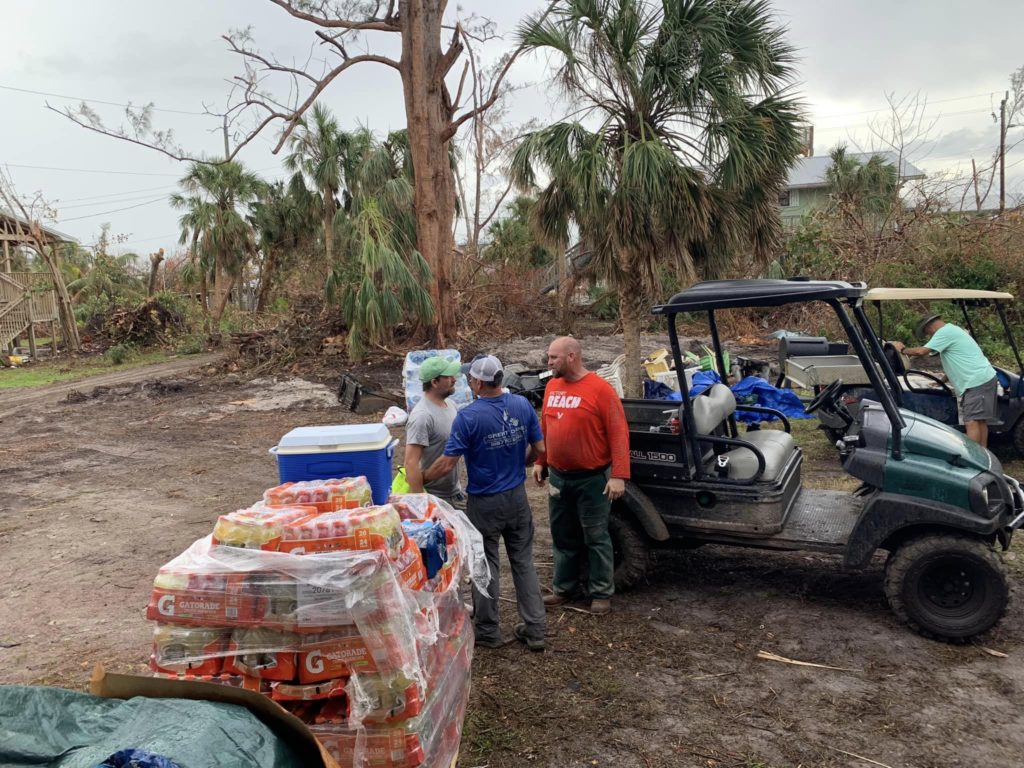
And all the while, people have made food. One night, residents had a dinner catered by FPL. Other nights, residents got together to feed the masses. People like Raphaela’s husband, William, rode up and down the streets in his golf cart, passing food out. As we have all learned, a nourishing, hot meal can give one a whole new perspective on things … even things as horrible as this thing.
With each day that passes, Hurricane Ian will become less of a disaster and more of a temporary stumbling block for the stalwart people of the barrier islands. That’s not to belittle this wicked storm, it’s just a statement of fact. Island people are far more resilient than they are given credit for … particularly those of LGI. Many in the outside world think these people all have money to drop on a new house, or any house repairs that are needed for that matter, when in fact many of them are just middle-class folks who have chosen this way of living to stay out of the general rat race. LGI is their sanctuary. If you asked them if they would rebuild and continue to stay there, most would say “yes” without hesitation, even if they had to put their last dime into saving their home.
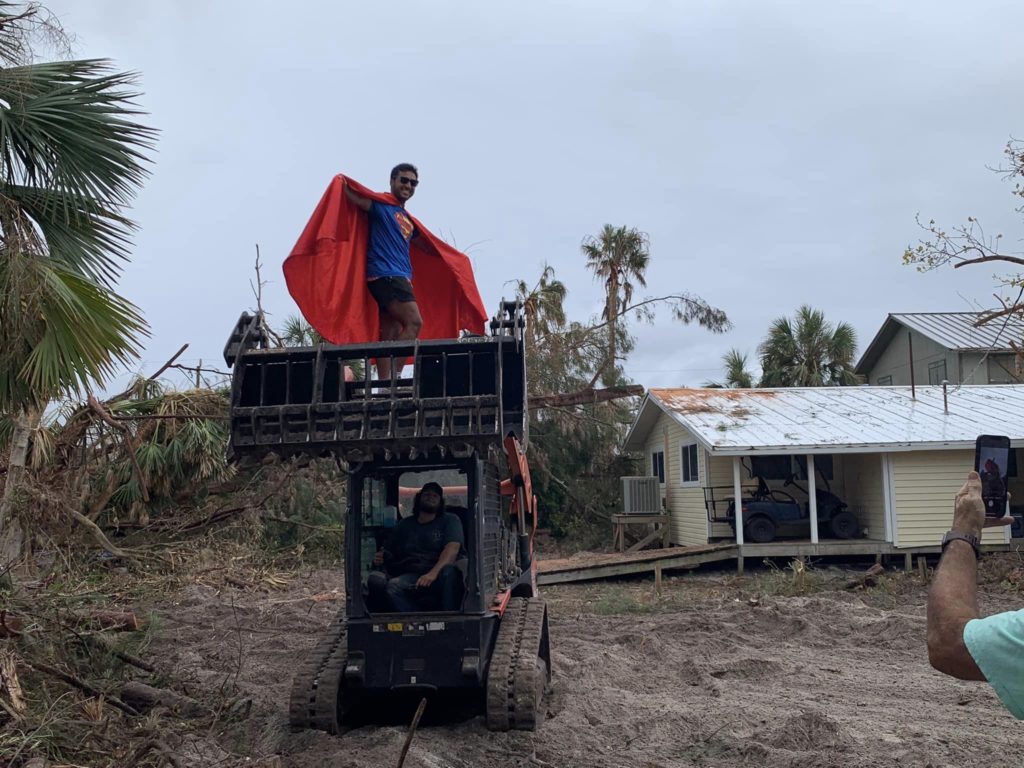
Raphaela said it best in a post on Facebook she created not long after the storm.
“This may be our slice of paradise but putting it back together will be no piece of cake. We are receiving several calls each day from people and companies wanting to come out here and work. most of these calls have the wrong island. Please note that LGI is only accessible by boat. There is no car ferry. The only way to get equipment off or on is by a privately-owned barge. You cannot drive down from Don Pedro or Palm Island. There are no “roads” out here. We have sand golf cart paths (yet we are a far cry from a country club), many of which cross private property. We appreciate your willingness and interest to assist, but please note that nothing is easy out here. Challenges of getting across the bay are only the beginning … there are no ‘get rich quick’ opportunities on Little Gasparilla Island. There is no doing anything for cheap. There is no doing anything quick. This is old Florida. It’ll take an old Florida mentality to succeed. We are always the last to receive help, if not totally forgotten about.
There’s a logistical reason for that. We are all here, because we are not all there.”
Photos provided by Raphaela Myers





